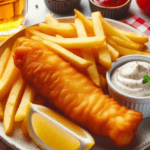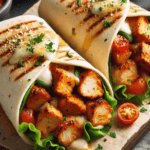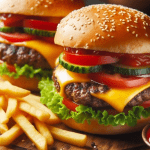Air Frying
Air frying is a relatively new cooking method that has gained popularity in recent years due to its ability to produce crispy, delicious foods with less oil than traditional frying methods. The history of air frying can be traced back to the 1960s when the first air fryer was patented in the United States. However, it wasn’t until the early 2000s that air frying really took off as a popular cooking method.

The science behind air frying is relatively simple. Air fryers work by circulating hot air around the food at high speeds, which creates a crispy outer layer while cooking the inside of the food evenly. This process is similar to convection ovens, but air fryers are smaller and more efficient, making them ideal for cooking small batches of food quickly and evenly.
One of the main benefits of air frying is that it allows you to cook foods with significantly less oil than traditional frying methods. This can lead to healthier, lower-calorie dishes that are still crispy and delicious. In fact, studies have shown that air frying can reduce the amount of fat in fried foods by up to 75% compared to deep frying.
Another advantage of air frying is that it can save time in the kitchen. Air fryers typically cook food faster than traditional ovens, and they require little to no preheating, making them a convenient option for busy weeknights or quick meals.
In conclusion, air frying is a relatively new cooking method that offers a healthier, more efficient way to enjoy fried foods. By understanding the history and science behind air frying, you can take advantage of this innovative cooking technique to create delicious, crispy dishes with less oil and in less time. Give air frying a try and see for yourself the benefits it can bring to your kitchen!
Pressure Cooking
Pressure cooking is a cooking technique that has been around for centuries and continues to be popular today. The history of pressure cooking can be traced back to the 17th century when a French physicist named Denis Papin invented the first pressure cooker. He discovered that by sealing food in a pot and heating it, steam would build up inside the pot, increasing the pressure and cooking the food faster.

In the 19th century, pressure cookers became more widely used as a way to preserve food for long periods of time. During World War II, pressure cookers were used by soldiers to cook meals quickly and efficiently. Today, pressure cookers are a common kitchen appliance used by home cooks to prepare meals in a fraction of the time it would take with traditional cooking methods.
The science behind pressure cooking is based on the principle that water boils at a higher temperature when under pressure. When food is sealed in a pressure cooker and heated, the steam that builds up increases the pressure inside the cooker, allowing the food to cook at a higher temperature than normal. This helps to tenderise tough cuts of meat, and cook food faster than conventional methods.
There are two types of pressure cookers: stove-top pressure cookers and electric pressure cookers. Stove-top pressure cookers work by heating food on a stovetop burner, while electric pressure cookers have built-in heating elements that regulate the temperature and pressure automatically. Both types of pressure cookers have safety features to prevent accidents, such as pressure release valves and locking lids.
In conclusion, the history and science of pressure cooking have evolved over the years to become a convenient and efficient way to cook meals. From its invention in the 17th century to its widespread use in modern kitchens, pressure cooking continues to be a popular cooking method for busy home cooks. With its ability to cook food quickly and retain nutrients, pressure cooking is a valuable tool for anyone looking to save time in the kitchen.
You might be interested in exploring more about the evolution of cooking techniques! Speaking of air frying, you can learn about its origins and impact on modern cooking in the Air Fryer article. If you’re curious about the fascinating history of pressure cooking, check out the details in the Pressure Cooking entry, which highlights its development from the 17th century to its role in today’s kitchens. Both techniques showcase innovative ways to simplify meal preparation and enhance cooking efficiency!




